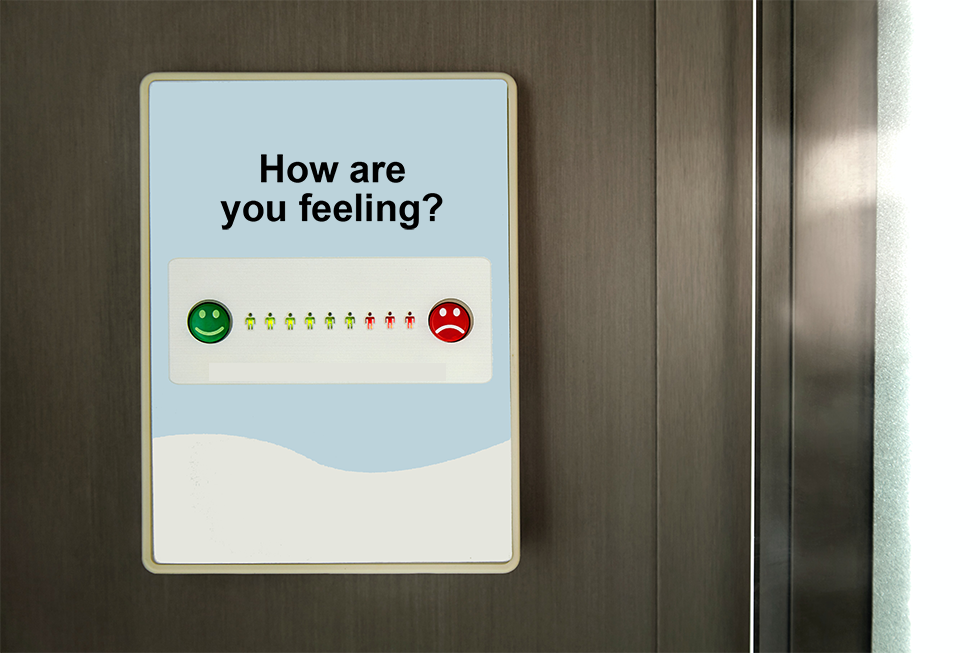Why are Patient Post-Discharge Surveys Important?
Post-discharge surveys for healthcare facilities are critical to improving patient satisfaction and care. They are also a vital component of the Hospital Consumer Assessment of Healthcare Providers and Systems (HCAHPS) survey, a measure used to determine which hospitals receive reimbursement funds. However, many patients do not complete these surveys–partially because they have already become a distant memory in the minds of patients who have moved on from their recent hospital stay.
In this post, we will cover four methods to improve engagement with your patient satisfaction and post-discharge surveys
1. Make it personal
While we can talk about the “patient experience,” it’s more helpful to recognize that patients have multiple experiences as they navigate their healthcare journey. That journey can be broken down into three phases: pre-care, care and post-care.
Smart hospitals and healthcare facilities consider the post-care surveys part of a patient’s journey to improved health. It’s not just about what patients are experiencing in the four walls of your hospital; it’s about how you can help them continue their healing at home.
The best way to achieve this is through a proactive approach, where you reach out to patients after discharge and ask them specific questions about their experience during each phase of their journey with your organization. For example, at Notivate Health, we send surveys via text within two days of discharge. These surveys often reveal patient confusion about their prescriptions or show us that they still feel unwell and would like to speak to someone. Recognizing specific keywords and quantitative metrics and integrated with your EHR, your survey platform should capture these sentiments and send alerts to the care team when patients indicate they didn’t understand post-care instructions. This helps keep your patient satisfaction high while decreasing the likelihood of readmissions. And most importantly, it can improve the health of your patients.

2. Explain how it benefits both the hospital and patients when patients fill out surveys.
When patients understand the importance of patient satisfaction surveys, they are more likely to fill out the survey. Draw a straight line from the surveys to how they can improve the level of care the hospital delivers. From their first interactions when setting their appointment to the final discharge, there are always areas for improvement. Get patients to understand that their direct input is critical in helping the staff to deliver excellent care.
What’s more, the Patient Protection and Affordable Care Act of 2010 established that some value-based incentive payments are dependent on collecting and submitting survey data, like that in the HCAHPS, to receive their full IPPS annual payment. Hospitals with enough capital and resources can afford to set lower prices because they don’t need as much money. When hospitals charge lower fees or provide discounted rates, they expand access to care.
3. Ask them.
A growing number of health care organizations are embracing a straightforward strategy to encourage patients to complete their post-discharge surveys: They ask. Keep your conversation direct and clear, and explain how post-discharge surveys can improve the patient’s health outcomes.
Consider the case of the South Carolina Department of Mental Health (SCDMH), with sixteen facilities across the state. The SCDMH, like most healthcare facilities, asks their patients to review their service deliverables upon discharge. But, due to COVID and the switch to 100% telehealth appointments, paper surveys were no longer an option since so few patients attended visits in person. They switched to text-based surveys with excellent results, but their efforts started with the Department educating their patients about the importance of the surveys and getting the go-ahead to send them a follow-up survey via text.
Asking before sending the survey helped patients prepare to engage with the survey.
4. Get the timing right
Encourage patients to complete the survey as soon as they leave your hospital. Researchers at the Boston University Medical Center (BUMC) developed and tested the Re-Engineered Discharge (RED) program. Research showed that the RED effectively reduced readmissions and posthospital emergency department (ED) visits. Part 12 of RED is a post-discharge follow-up contact 2-3 days after discharge. You should optimize that schedule to whatever works best for your facility, but at Notivate, we find surveys sent within 48 hours get the best engagement.
5. Speak with them face-to-face, one-on-one.
One way to convince patients to complete their post-discharge surveys is to speak with them face-to-face, one-on-one. This is one of the best ways to make patients feel valued and understood, and it can have a lasting impact on their satisfaction levels.
This personal touch is more difficult for larger hospitals, but it’s not impossible. For example, in delivering patient care, nurses conduct brief conversations with patients, which usually include asking them if they have any questions or concerns about their care. These conversations can prepare patients for their health risk assessments, patient satisfaction surveys, remote health monitoring surveys or other surveys.
The point is that while surveys are nothing new, they have evolved with the times, and your strategy should evolve with them. It’s not enough to just run a survey these days — you want to run a survey that people want to fill out, which impacts the overall success of your program. So study how you can get the most out of patient satisfaction surveys, post-discharge surveys and wellness surveys, choose the right ones for your organization and start collecting meaningful data today.
If you would like to learn more about implementing automated communications and how they can improve patient engagement with your surveys, contact us.
Resources:
Photo by Bermix Studio on Unsplash

Recent Comments